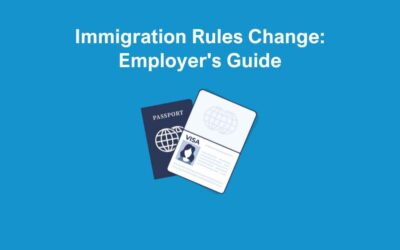We have seen an increase in the number of queries coming from clients since returning to work after the new year break. One of the main topics we are being asked about is what to do in the event of a shortage of work. Some businesses are experiencing a downturn, or where their order book is quiet over the next few weeks.
Whilst the first impression might be to consider making redundancies, if your business has a shortage of work, you may want to look at an alternative solution. One other option could be short-time working.
What is short-time working?
Short-time working is when an employee receives less work and therefore less pay. This can be useful for your business in the event there’s less work available. With the current cost of living crisis and many households watching their pennies after Christmas, this could have an impact on your business.
You can’t force an employee into this. You must get their consent and if you don’t, this can result in claims for a breach of employment contract.
But only if there’s not a lay-off and short-term working clause in their contract. If there is, what’s outlined there needs to be followed.
Before you proceed, you should make sure your employee is comfortable with short-time working. If so, then you can continue down this path. You should also provide them with written confirmation (this is something we can help with) or you should seek legal advice on this matter.
How does it work?
You make the decision to place employees on fewer hours. So they’ll receive less than half a week of pay. You can pursue this option if:
- You have a clause in an employee’s contract of employment. This will explain that you can go ahead with this arrangement if you require to, which the employee will have agreed with on signing their contract.
- There’s an agreement in your industry to allow it.
- There’s a trade union and workplace agreement.
- You and your employee agree to change their contract.
If you agree to change the contract, you have to provide the employee with plenty of warning. In the case of short-time working, it’s within one month of the change. You should confirm this change in writing—send the letter over to the employee and provide a copy of their updated contract.
It’s also important you are aware of current employment laws in the UK.
You can ask your employee to stay at home if there’s no work. Lay-off and short-time working aren’t the same thing. The second option is when an employee’s hours are cut. Lay-off is where they’re off work for at least a week. You’ll need to pay the employee their normal wage in either situation. That’s except if you have an employment contract stating the employee can take a reduced wage—or they must go with no pay.
Short-time working contract clause
You can request employees not to arrive at work. But you must still pay them.
In this case, if you have a specific clause in your contracts of employment then you can have temporary leave without any pay. However, you must receive consent from your employees. For example, if they sign their employment contract with your business.
How long can short-time working last?
There’s no limit—this can continue indefinitely. You should be aware that employees can make a claim for redundancy if the period of time is beyond 4 consecutive weeks.
What happens in the event of redundancies?
If you place your employees on short-time working where their pay for a week worked is less than half a week’s pay, or it lays them off for an entire week (or both), the employee may be eligible to request a redundancy payment.
Employees will be able to do this if they’ve worked for two years or more with your business. This also applies If they’ve had a period of lay-off or less hours for four or more consecutive weeks or a total of six weeks in any 13-week period.
Short-time working as an alternative to redundancies
During the current cost of living crisis, it’s important your business considers all available options.
Although it may appear all you can do is process redundancies, there are several options you have available. These can help ensure talented employees stay within your business. And they include:
- Laying-off staff.
- Offering unpaid leave.
- Offering short-time working.
- Sabbaticals or career breaks.
You’ll need to review your business situation to understand what is the best option for you, and you should always seek advice. There are alternatives to redundancy, enabling you to retain talent.
Contact Us
There are many more alternatives to redundancy that we can recommend and give advice on. Please contact our outsourced HR Consultants if you would like any further information on Short-Time Working, making redundancies or implementing alternatives to avoid redundancies. We will ensure you follow the correct processes at all times to mitigate any risks for your business.







